
Nose and Sinus Problems
Blocked nose
Everyone suffers a sensation of blocked nose at one time or another, especially during a bad cold. If nasal blockage persists or if it tends to affect only one side, then it is important to have it checked out.
There are many conditions which can cause a blocked nose:
- Allergic rhinitis (hayfever)
- Sinusitis (infection of the sinus air spaces in the nose)
- Nasal polyps
- Benign nasal tumours
- Deviated nasal septum (bone in the middle of the nose which separates both nasal passages)
- Enlarged inferior turbinates (structures in the nose which help warm and humidify airflow)
- Malignant lesions such as tumours of the sinuses or back of the nose (postnasal space)
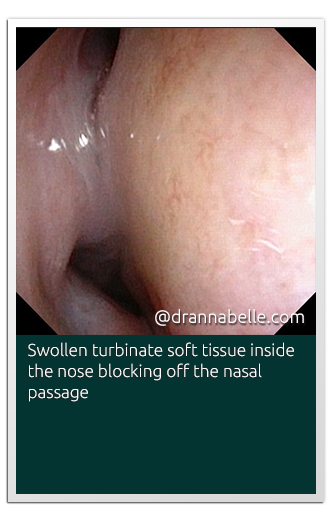
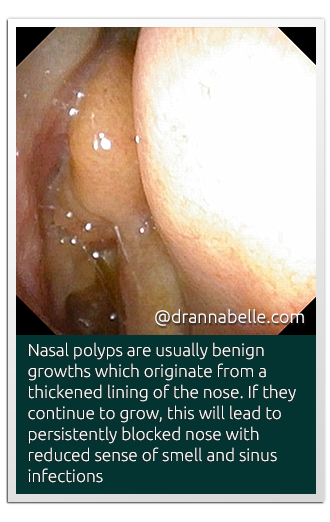
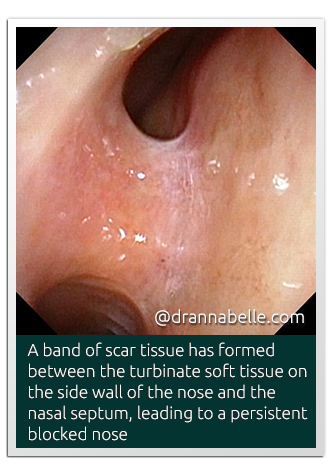
A thorough ear, nose and throat checkup is performed and would include a flexible nasoendoscopy procedure where a soft thin camera is inserted into the nose to examine the back of the nose, throat and voicebox with photos taken. Treatment would be directed according to the cause and may first consist of medications in the form of tablets or nasal sprays. If medications fail to alleviate the problem, then surgery may be indicated to:
- Improve drainage of the blocked sinuses: Functional Endoscopic Sinus Surgery (FESS)
- Correct a deviated nasal septum: Septoplasty
- Remove enlarging nasal polyps or other growths: Polypectomy
- Reduce the size of enlarged turbinate soft tissue: Radiofrequency ablation of the inferior turbinates (RFIT) is a relatively common minor procedure which safely shrinks down the enlarged inferior turbinates to improve the nasal airway to help the patient breathe better. Turbinoplasties are also another effective and more longterm option to provide a clear nasal airway to breathe through.
Septoplasty
Septoplasty is a surgical procedure to correct or straighten a deviated (crooked) nasal septum. The nasal septum is a bony partition which divides the left and right nasal passages. Nobody’s septum is perfectly straight but in many people, the septum may be deviated with spurs of bone protruding out in to either nasal passage to narrow its size. Deviated nasal septums may also result from previous nasal trauma.
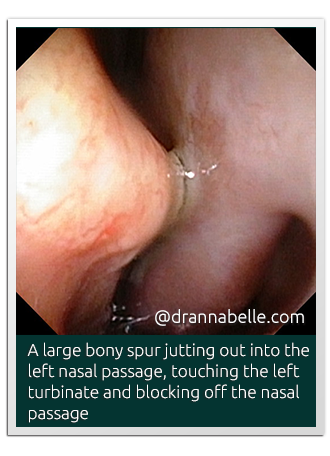

If the deviated nasal septum is causing a blocked nose issue, then a septoplasty is an effective procedure to undergo to help you breathe clearly again. Septoplasty is almost always performed together with another procedure to reduce the size of the turbinate soft tissue which lies on the lateral side walls of the nose (either Radiofrequency ablation of the inferior turbinates or turbinoplasties). The septum and turbinate surgery work well together to result in clear nasal passages that allow you to breathe clearly again through the nose.
Although septoplasty alone may be performed as a daycase procedure, combining it with turbinoplasties usually may mean staying in hospital overnight as special sponges will be temporarily inserted into the nose as nasal packing to prevent postoperative nosebleeds. The next morning, the nasal sponges will be gently removed at the bedside and most patients will be discharged home from hospital.
Postop care involves visiting the clinic once a week for the first month to have the nose cleaned out with gentle suction to ensure that the best healing results are achieved.
Nose and Sinus Infections (Sinusitis)
Infections in the nose may originate from the sinuses (air spaces in the skull) and may arise from a bad cold or the flu. Patients suffering from sinusitis tend to be trobuled by a yellowish or greenish discharge from the nasal passages, blocked nose and a poor sense of smell. Some patients may be plagued by headaches while others report a persistent foul smell coming from inside their nose. In children, inflammation of the adenoid tissue at the back of the nose may lead to a persistent runny nose and mouth-breathing, rather than actual sinus infection itself, because the sinuses are not yet fully developed in young children.
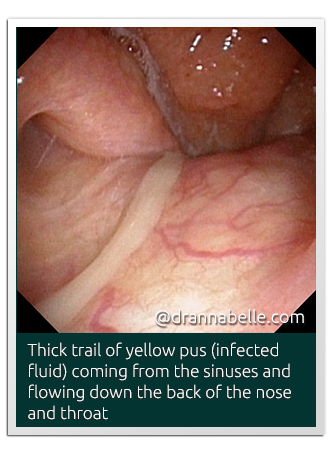

The first line treatment for nose and sinus infections usually includes antibiotics, nasal decongestant sprays and saline nasal wash. Most infections will clear up within a week.
If they do not get better, then a thorough examination of the nasal passages and sinus openings with a flexible endoscope is helpful to look for other problems such as nasal polyps. Persistent or recurrent sinus infections may have to be treated with minimally invasive functional endoscopic surgery (FESS) to improve the drainage of the sinuses and nasal passages.
Functional Endoscopic Sinus Surgery (Fess)
FESS aims to clear the blocked drainage routes of the sinuses so that the secretions of the sinuses and nose can flow freely and naturally once again. The surgery is performed under general anaesthesia with the guidance of an endoscopic camera so that there are no incisions on the outside of the nose. A special balloon is sometimes used to help dilate and widen the blocked sinus pathways. Patients who undergo FESS usually stay overnight in hospital, although it can be done as a daycase. Special nasal sponges are inserted into the nose to prevent postoperative nosebleeds and are removed the following day before patients are discharged home from hospital.
Postop care usually involves having the nose cleaned out in clinic with gentle suction to remove crusts and dried secretions. This helps achieve the best possible postop healing results.
Nasal polyps
Nasal polyps are benign growths inside the nasal passage which originate from the lining (mucosa) of the nose. They look a lot like yellowish-coloured “grapes” and may cause the nose to feel blocked or lose its sense of smell. They may also block off the natural drainage pathways of the sinus air spaces inside the skull, leading to recurrent sinus infections. Although the precise cause of nasal polyps remains unknown, nasal polyps are thought to be related in some way to underlying allergy problems with the nose. Medications such as steroid sprays are prescribed to control or shrink these polyps. Sometimes, steroid tablets are also prescribed to more effectively reduce the size of these polyps.
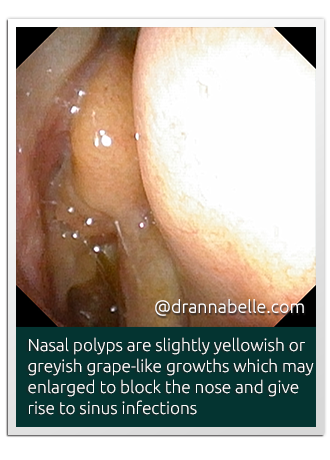
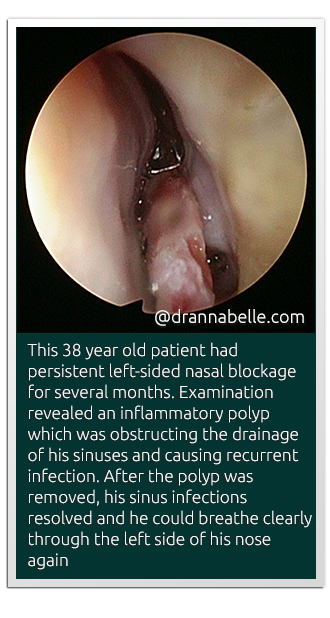
Nasal polyps usually occur in both nasal passages so if they are only found on one side, then this means further investigation like a CT scan and/or biopsies may have to be performed to rule out a more worrying types of nasal polyps, in addition to the standard flexible endoscopic examination of the nose.
If nasal polyps fail to respond to the medications prescribed, then the next step is surgical removal via a functional endoscopic sinus surgery (FESS) approach . This is minimally invasive and performed entirely inside the nose with the guidance of an endoscopic camera. The aim of surgery is to restore the nasal airways so that the patient can now breathe better.
Nosebleeds
Nosebleeds commonly occur in children and adults. The most common site of bleeding tends to originate from the anterior part of the nasal septum (the central bony division which separates both nasal passages) where there are delicate blood vessels which can bleed easily. Nosebleeds may be caused by digging of the nose e.g. with one’s fingers, seasonal changes eg in winter, hayfever or if the patient is on blood-thinning medication. Nosebleeds also happen if there has been some form of nasal trauma.
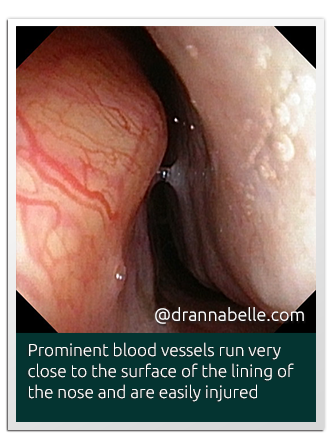

Simple treatment involves applying some antiseptic ointment inside the nose or undergoing cautery with a special stick coated in a silver chemical to seal off the fragile blood vessels (silver nitrate cautery). This can be done easily in the clinic with the help of some local anaesthetic cream to make it totally comfortable.
If the nosebleeds do not improve, it is best to have your nose checked out by the ENT specialist to rule out more worrying problems such as a tumour growing inside the nose. A soft thin flexible endoscope is passed into the nose to carefully examine both nasal passages and the back of the nose. The procedure is painfree and almost all patients, including older children, will be able to tolerate this without any problem.






